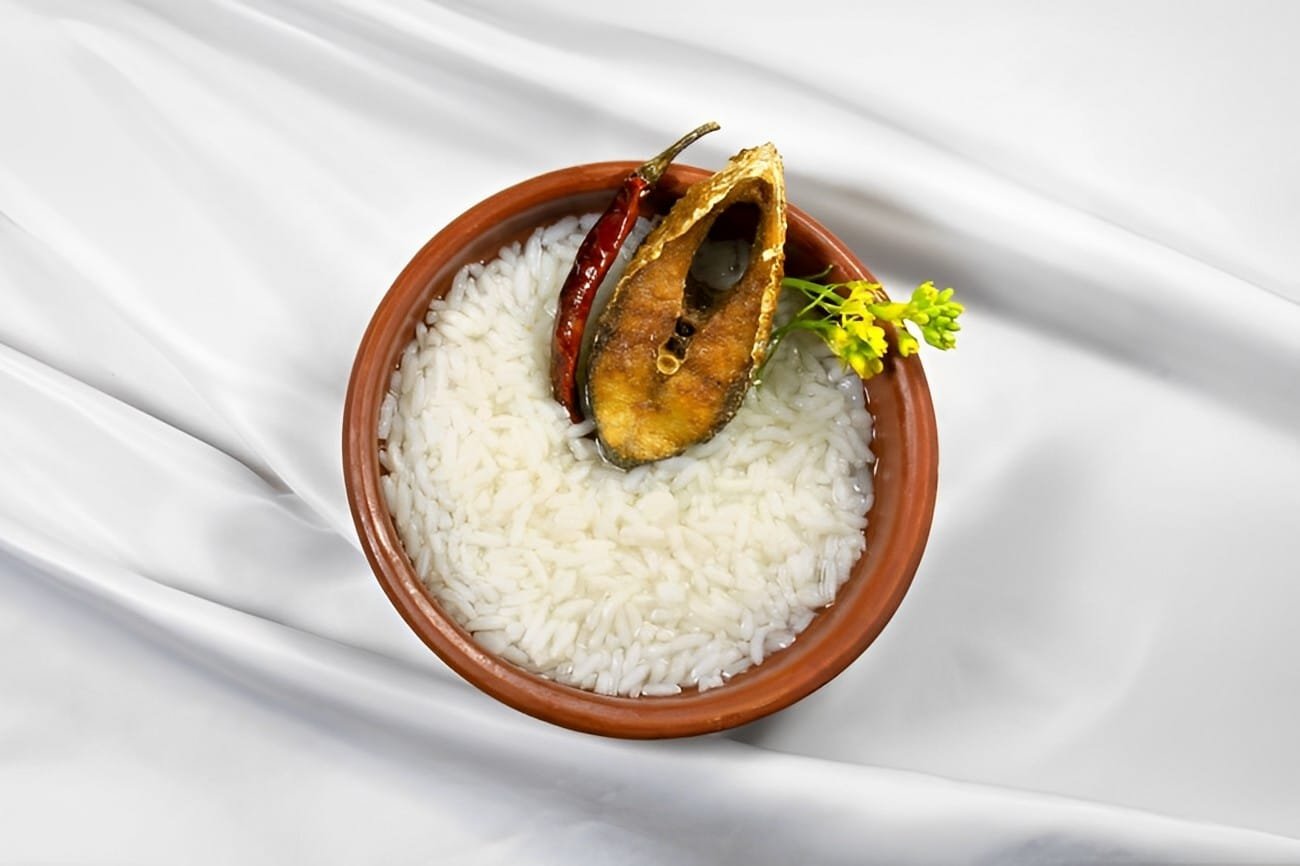Shubho Noboborsho! A Bangladeshi New Year Tradition

Pohela Baishak in Bangladesh has been added to UNESCO's Intangible Cultural Heritage List. Reema Islam looks at the special foods and rituals that form part of the traditions of this agrarian community.
A burst of colors, and the sounds of a new year mark Pohela Baishakh, Bangladesh’s most awaited festival. The last month of the year, Choitro prepares us for the brooding clouds and tumultuous nor’westers or cyclones called Kalboishakhi, aptly lending its name to the month — Boishakh. Thus, the first day of the new month — Pohela Baishakh, begins the Bengali new year.
Yet, Bangladesh is not the only nation that welcomes the new year in the month of Baishakh. Celebrated in many South Asian countries as Songkran in Thailand, Puthandu in Tamil Nadu and Boun Pi Mai in Laos, this festival has not waned in its popularity, and continues to be a day of traditional rituals, families gatherings, and above all, great food.
Mongol Shobhojatra at the Dhaka University with local animals and other traditional characters
Images above: At Phul bizu Chakma people of Rangamati wake early, clean their houses, decorate them with flowers, and float flowers in rivers, canals and springs to seek blessings from the god of peace and prosperity.
Although the Mughal emperor Akbar is credited with adopting this calendar for the annual agricultural tax, as opposed to the lunar or Hijri calendar, it is Shashanka, of the Gauda kingdom (6th century CE) who most likely began this practice. Thus, Akbar chose a calendar in sync with the harvest times of farmers and Fasli San or Bongabdo, was launched in 1556 CE, on the last day of the Bengali year Choitro. This allowed farmers and traders alike, a fresh start on the first day of Baishakh. Bangladesh went a step ahead and ordained Pohela Baishakh on 14th April, making it a nationally celebrated public holiday.
A Festival of Cuisine, Art and Music
Newly-independent Bangladesh embraced its cultural diversity, and by the 1980s Pohela Baishakh had transformed into a festival with a distinct cuisine, art forms and music. The morning begins with Tagore’s songs followed by a loud and colourful procession lead by Dhaka University’s Faculty of Fine Arts, Charukala. This procession or Mongol Shobajatra is now part of UNESCO’s list of Intangible Cultural Heritage.
Boli Khela held on 12th Boishakhi, is a popular wrestling championship that marks the new year in the port city of Chittagong. Started by Mr. Jabbar in the early 20th century to prepare the youth against the British through combat, Boli (wrestling) Khela is now a full-blown festival with a wooden Ferris wheel (nogor dola), puppet shows and handcrafted products.
In the Chittagong Hill Tracts (South East Bangladesh), the festival is called Boisabi and the ethnic communities such as the Marmas and Rakhaines use jets of water to cleanse the previous year’s sorrows. The Chakmas of Rangamati float flowers in the river on the first day or Phul Bizu.
The last day of Choitro, marking the end of a year and Spring, features a vegetarian meal with bitters and sours. The new year had bhortas, sweets and murki (parched paddy mixed with melted jaggery), seasonal vegetables and a protein, but recent items see an influx of Panta ilish. An attempt at promoting all things Bangladeshi, the national fish ilish (Hilsa) is served with one of Bangladesh’s most popular breakfast items Panata bhaat (leftover rice, soaked overnight) and a bevy of bhortas. The idea is to let the rice ferment and absorb the flavours of the spicy bhortas, but there is a twist; ilish is not a seasonal fish! So, the government in 2016, imposed fishing bans to allow the fish to reach spawning stage, forcing food enthusiasts to return to more traditional foods.
Prepare a festive Pohela Baishakh meal with 4 signature recipes.
1 Panta Ilish with Bhorta
2 Badam er bhorta
3 Shorishe with shonje
4 Gur er sandesh
Photo credits: Reema Islam & Shamik Barua.
Reema Islam is a heritage food researcher in Dhaka, Bangladesh, working in the development sector.
ALSO ON THE GOYA JOURNAL











